A dementia friendly garden in a Care home is an essential, multifunctional space that provides enormous benefits to patients, staff, therapists, and visitors. It is a safe space for the elderly using walking sticks, crutches, walkers, and wheelchairs. A garden is designed as a quiet space to reduce and contrast the over-stimulation of busy and crowded environments, patterned walls and floors, unnecessary clutter, and noise from equipment. The garden provides positive stimulation for people with dementia to see, touch, hear, and smell nature. Visually to see, bright yellow, orange, and red flowers, to smell fragrant herbs and to hear sounds of flowing water, the songs of birds and buzzing of insects. These sensations stimulate memories for dementia patients, even in the later stages of the disease when communication is difficult. A garden also provides the opportunity to exercise and be exposed to sunshine and vitamin D. A quiet place in the garden allows for personal relaxation, reflection and respite. The changing of season and daylight in the garden keeps the patient aware of the time of day, which assists in regulating sleep patterns and circadian rhythms.
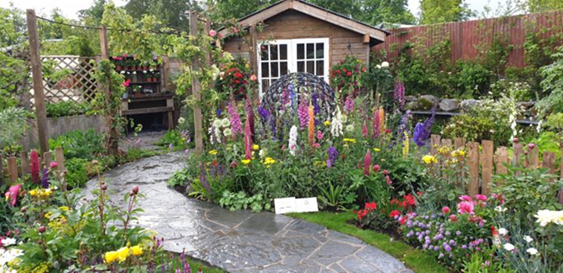
https://www.limerickpost.ie/2019/06/10/limerick-community-hospital-wins-nationwide-competition-for-award-winning-dementia-friendly-show-garden/Award winning dementia friendly garden
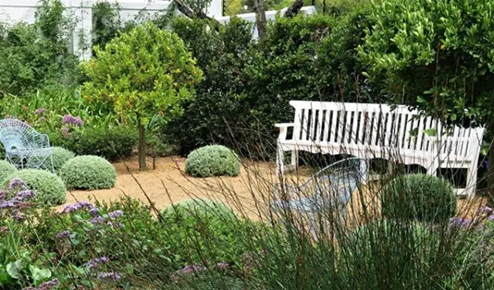
https://www.capetownmagazine.com/open-gardens
Garden Layout
The dementia-friendly garden challenges the designer to meet and exceed the requirements.
• Well-defined pathways, level and free of obstacles. They should include points of interest for activity and social interaction.
• Colour contrast between elements in the garden.
• Areas for seating and tables in a shaded recess.

Dementia friendly healthcare HBN_08-02.pdf
• Support connections to familiar experiences, for example a shed with safe tools to use.
• Use non-toxic plants and horticultural activities as therapeutic tools.
• Play area for the use of visiting children.
• Area for visiting pets and animals.
• Provide sensory experiences to stimulate different senses, eg smell, sound, vision, touch, and taste.
The United Kingdom Department of Health Building Note 08-02 for Dementia-friendly Health and Social Care Environments include the following points above.
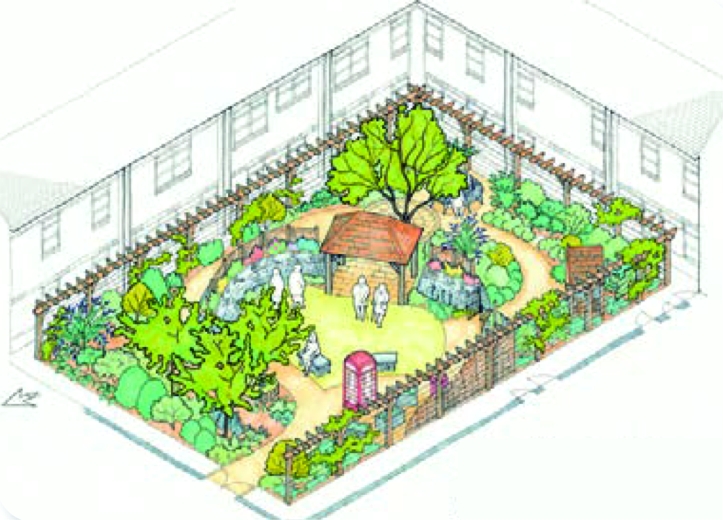
http://www.Dementia friendly healthcare HBN_08-02.pdf
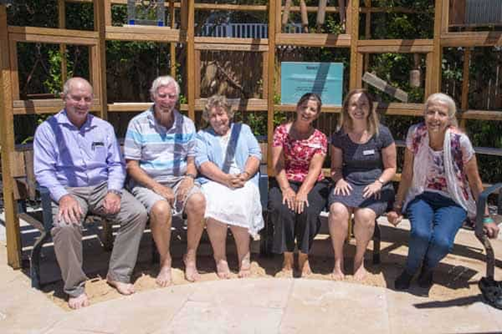
https://www.thewestportclub.com.au/blog/dementia-friendly-garden/
Additional Requirements:
• A circular pathway layout is essential to direct the walker back to their starting location.
• A circular pathway layout is essential to direct the walker back to their starting location.
• Garden to be secure with a single restricted access point for patients who lose their way.
• Yellow, orange, and red colours are seen more easily by the elderly, while dark colours fade away.
• Use local water wise and non-toxic plants. Avoid sharply textured plants.
• An annual gardening programme is required.
• Allow able bodied patients to assist with tasks. Provide raised flower beds for people in wheelchairs to garden in.
• Places of interest can include a historical walk (pictorial or tactical artwork), textured memory wall (Bridge Street, Port Macquarie, Australia).
• Garden accent lighting adds to evening ambiance and to security at night.
• Avoid shiny surfaces.
• Garden perimeter and fencing to blend with garden design.
• Be aware of the acoustics in the garden. Plants and trees absorb sound.
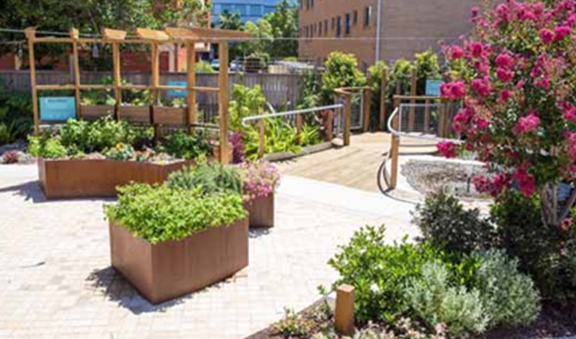
A pathway with handrails leads the patient into the garden. The sound of a running water fountain welcomes and provides auditory transition into the garden.
https://www.thewestportclub.com.au/blog/dementia-friendly-garden/
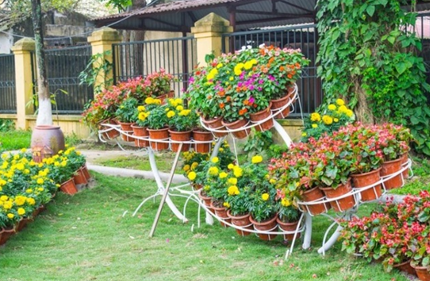
https://www.sensorytrust.org.uk/blog/how-to-design-a-dementia-friendly-garden
An environment without nature is institutional, barren, unthinkable, especially for those who live in Care homes or their own homes. Not having a garden is a missed opportunity. The dementia friendly garden is a multisensory experience that adds to the patient’s quality of life and wellbeing. Focus on providing sensory opportunities, including the physical and visual enjoyment of the garden to combine with and stimulate the patients’ memories. This is important as the dementia erodes a person’s memory and the sensory interaction provide stimulation to the brain.
+
